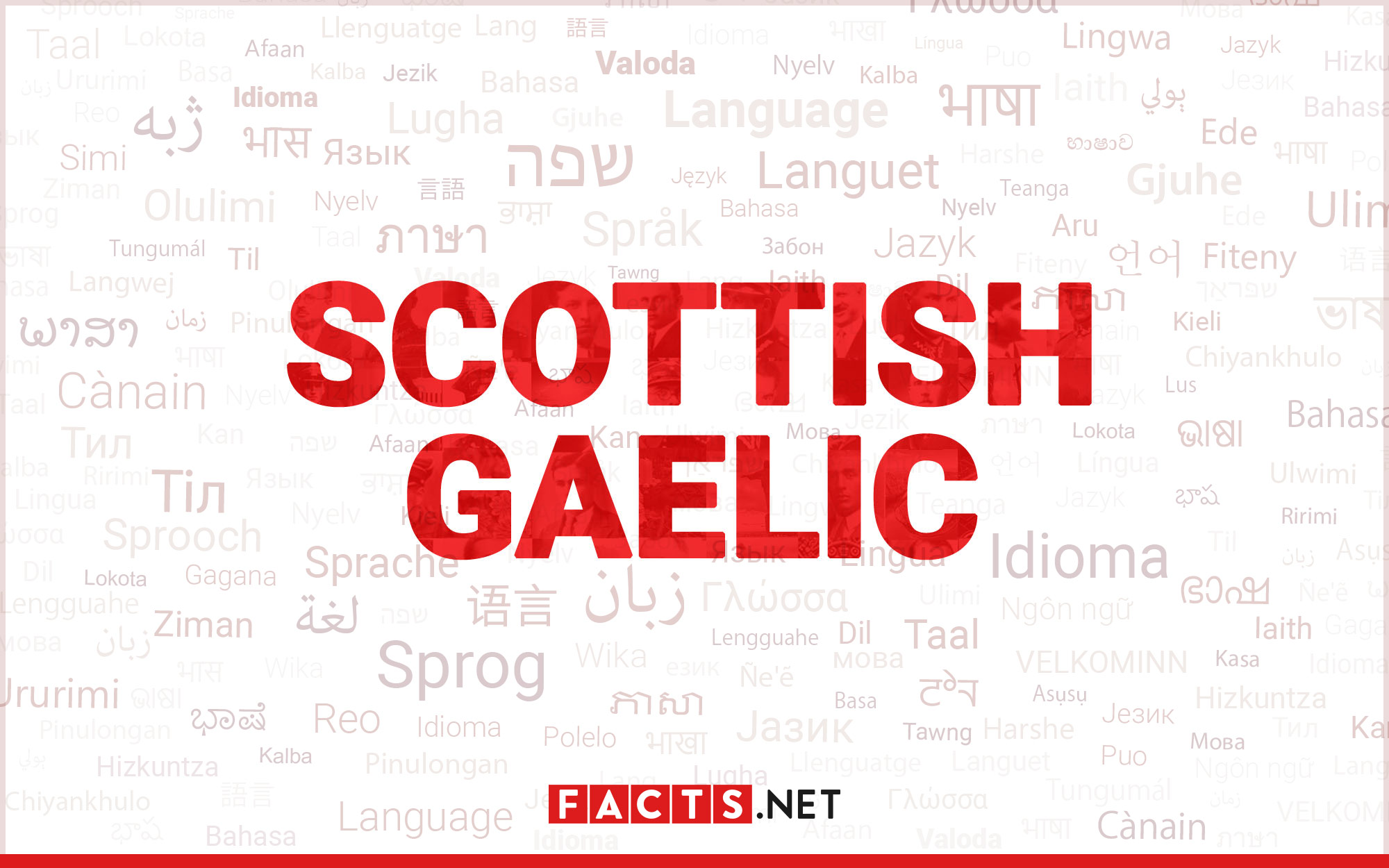
Scottish Gaelic, also known as Gaelic or Gàidhlig, is a fascinating language that has a rich and vibrant history. Spoken primarily in Scotland, it is one of the ancient Celtic languages that is still in use today. Despite its relatively small number of speakers, Scottish Gaelic has managed to survive and thrive, thanks to the efforts of dedicated individuals and communities.
In this article, we will explore 12 surprising facts about Scottish Gaelic that will give you a deeper understanding and appreciation for this unique language. From its ancient roots to its connection to Scottish culture, you will be amazed at the richness and complexity of Scottish Gaelic. So, let’s dive in and discover the lesser-known aspects of this remarkable language.
Key Takeaways:
- Scottish Gaelic is an ancient language with a rich history, unique alphabet, and distinct pronunciation. Efforts are being made to revitalize and promote its use in Scotland.
- Gaelic culture, including music, dance, and storytelling, is deeply intertwined with the language. It has left its mark on Scottish place names and continues to influence the country’s heritage.
The Scottish Gaelic language has a rich history.
Scottish Gaelic, also known as Gàidhlig, is a Celtic language that has been spoken in Scotland for centuries. It has deep roots in the Gaelic-speaking communities of the Highlands and Islands.
Gaelic is one of the oldest languages in Europe.
Scottish Gaelic is a member of the Goidelic branch of the Celtic language family, which also includes Irish and Manx. It is believed to have descended from Old Irish and has been spoken in Scotland since at least the 5th century.
There are around 58,000 people who speak Scottish Gaelic.
Despite its decline over the years, there is still a vibrant community of Gaelic speakers in Scotland. Efforts are being made to revitalize the language and promote its use through education and cultural initiatives.
Scottish Gaelic has its own alphabet.
The Scottish Gaelic alphabet, known as the Gaelic script, consists of 18 letters. It is derived from the Latin alphabet but includes additional characters such as ò, à, and ù.
The language has a unique pronunciation.
Scottish Gaelic has its own distinct phonetic system, which can be challenging for English speakers to grasp. Vowels are pronounced differently, and words often have a melodic quality to them.
Gaelic has a rich oral tradition.
Storytelling and poetry have played a significant role in Gaelic culture, with powerful tales and poetic works passed down through generations. The language is deeply intertwined with the cultural heritage of the Scottish Highlands.
Scottish Gaelic is experiencing a revival.
In recent years, there has been a renewed interest in Scottish Gaelic. Efforts are being made to teach the language in schools, and Gaelic-medium education is becoming more popular.
Gaelic is an official language of Scotland.
Scottish Gaelic holds official language status in Scotland alongside English. Bilingual road signs and government publications reflect this recognition.
Many Gaelic words have roots in Norse and Latin.
Due to historical influences and interactions with other languages, Scottish Gaelic has borrowed words from Norse, Latin, and even English. This linguistic blend adds an interesting dimension to the language.
The Scottish Parliament has a Gaelic Language Plan.
In an effort to promote and preserve the Gaelic language, the Scottish Parliament has developed a Gaelic Language Plan. This includes initiatives to increase the use of Gaelic in public life and ensure its sustainability.
Gaelic music and dance are integral parts of the culture.
Gaelic culture is deeply rooted in music and dance. Traditional Gaelic songs, known as “puirt-a-beul,” and lively ceilidh dances are cherished elements of Scottish cultural events.
Scottish Gaelic has a strong influence in Scottish place names.
Many place names in Scotland, especially in the Highlands and Islands, have Gaelic origins. From Ben Nevis to Loch Ness, Gaelic has left its mark on the country’s geography.
Conclusion
In conclusion, Scottish Gaelic is a fascinating language with a rich heritage and unique characteristics. Its origins and evolution over the centuries have shaped it into the beautiful language it is today. Despite facing challenges in recent years, Scottish Gaelic continues to be spoken and cherished by a passionate community of speakers. Its cultural and historical significance cannot be understated, as it represents a vital part of Scotland’s identity.By exploring these surprising facts about Scottish Gaelic, we gain a deeper appreciation for this ancient language and the people who speak it. From its distinctive grammar and pronunciation to its contributions to literature and music, Scottish Gaelic stands as a testament to the resilience and strength of a language that has endured through the ages.As we continue to celebrate and preserve the diversity of languages around the world, Scottish Gaelic serves as a reminder of the importance of linguistic heritage and the power of language to connect us to our past and shape our future.
FAQs
1. Is Scottish Gaelic still widely spoken?
While Scottish Gaelic is not as widely spoken as it once was, there is still a dedicated community of speakers who actively use the language. According to the latest statistics, there are approximately 60,000 people who speak Scottish Gaelic, primarily in the Scottish Highlands and a few other regions.
2. Is Scottish Gaelic similar to Irish Gaelic?
Scottish Gaelic and Irish Gaelic share common roots and are classified as Goidelic languages within the Celtic language family. While there are similarities in vocabulary and grammar, there are also notable differences in pronunciation and spelling. However, speakers of one language can generally understand and communicate with speakers of the other.
3. Can I learn Scottish Gaelic online?
Absolutely! There are several online resources, courses, and apps available for individuals interested in learning Scottish Gaelic. These platforms provide lessons, exercises, and interactive materials to help learners develop their language skills at their own pace.
4. Are there any Gaelic-speaking communities in Scotland?
Yes, there are Gaelic-speaking communities scattered throughout Scotland, particularly in the Scottish Highlands and the Western Isles. These communities actively promote and preserve the use of the Gaelic language through cultural events, festivals, and language immersion programs.
5. Is Scottish Gaelic considered an endangered language?
While Scottish Gaelic has experienced a decline in speakers over the years, efforts are being made to revitalize and promote the language. Various initiatives, such as Gaelic-medium education and government support, aim to ensure the viability and sustainability of Scottish Gaelic for future generations.
Immerse yourself in the fascinating world of Celtic languages, where Welsh and Scottish Gaelic share a rich history. Uncover surprising facts about Welsh, a language that has thrived despite challenges. Gaelic, with its unique alphabet and pronunciation, continues to captivate language enthusiasts. Explore the revival of these ancient tongues and their enduring influence on culture and place names.
Was this page helpful?
Our commitment to delivering trustworthy and engaging content is at the heart of what we do. Each fact on our site is contributed by real users like you, bringing a wealth of diverse insights and information. To ensure the highest standards of accuracy and reliability, our dedicated editors meticulously review each submission. This process guarantees that the facts we share are not only fascinating but also credible. Trust in our commitment to quality and authenticity as you explore and learn with us.


